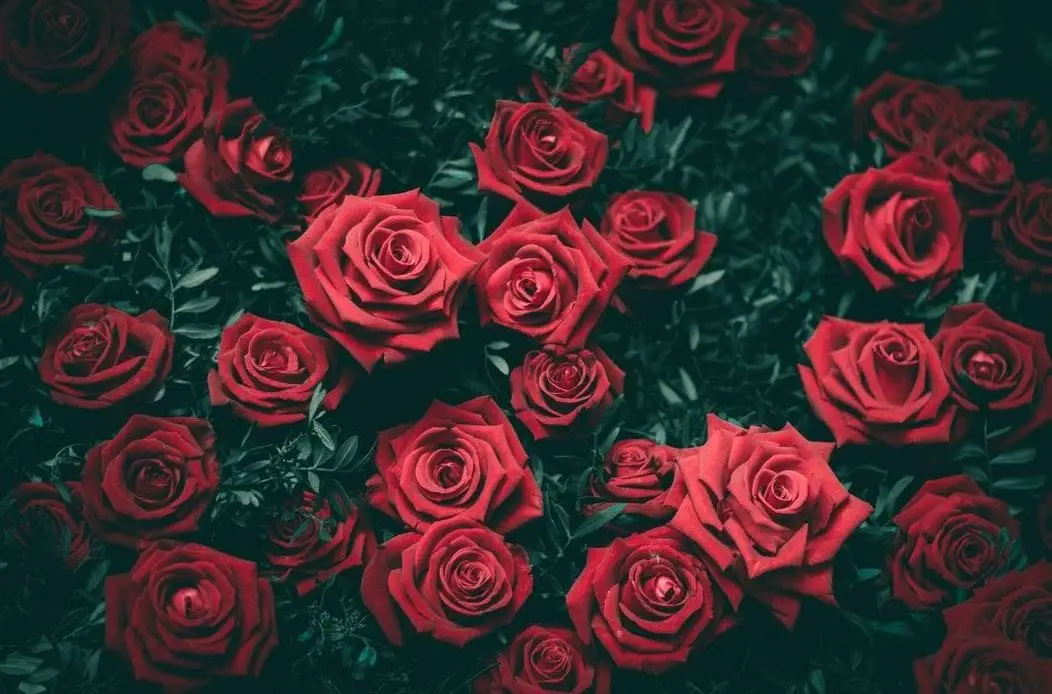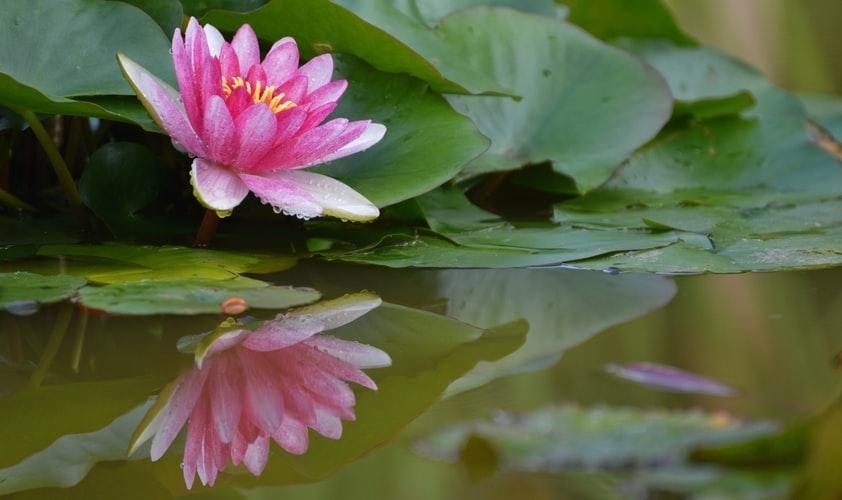
Today we are going to talk about unique varieties of dicot flowers that one must know about. Dicot flowers are a category of flowers that have two cotyledons – which results in flowers having five or more petals.
1) Rose
Rose has often been used as an expression of love and affection on special occasions. Roses bloom throughout the season from mid-spring to fall which makes them ideal as garden plants. When in full bloom, most roses become crimson red, making them naturally appealing to our eyes. Rose plants are also among the many dicot plants that have developed thorns as a defense mechanism. The rose flower also grows into the fruit called rosehip, which is rich in vitamin C – a reason why it is used to create jam jelly and rose hip syrup.
2) Foxglove
The dicot flower Foxglove earned its name from the shape of its flowers. When fully grown, its flowers look akin to gloves fit for the paws of small animals such as foxes. In the language of flowers, foxgloves are associated with insincerity for having the ability to both heal and kill. Even the slightest consumption of this plant can prove to be fatal for humans. On the other hand, foxgloves have several medicinal properties and help in the healing of bruises, ulcers and sore throat. The plant mainly blooms from June to September and produces 20-80 purple-pink flowers arranged in the form of a long spike.
3) Marigold
Marigolds are also dicot flowers that have an interesting ability where they open their petals when the Sun is up – similar to the way sunflowers behave. In the language of flowers, marigolds often symbolize creativity and strong feelings of passion – often referred to as the ‘herb of the sun’. Marigold flowers also have medicinal properties and are often used to treat skin wounds, burns, and rashes. Blooming occurs all year round from early summer to frosty autumn.
4) Daisy
There is an ancient legend surrounding the dicot flower daisy: whenever an infant died, God would sprinkle daisies to cheer the parents. Therefore, daisies have come to symbolize innocence and purity. Almost everyone can recognize a daisy – white petals surrounding a yellow center. Contrary to their innocent appearance, they are known to irritate pets and can be poisonous if consumed in high quantities. Daises bloom during late spring and continue until early fall.
5) Snapdragon
Snapdragon flowers are one of the rare dicot plants that are actually edible and are even served as garnish for dishes in restaurants and bars. Snapdragons are named after its flower, which resembles a dragon’s face that that opens and closes its mouth when the flower is pressed on its sides. They are often used in bouquets and have a variety of colors: pink, purple, lavender, white, yellow, orange and burgundy. These beautiful flowers are mainly available during the spring and summer seasons.
6) Sunflower
Sunflowers are also dicot plants and have got their name from their unique property of following the Sun by turning their flowers to face the Sun at all times. Due to this property, sunflowers are normally linked to feelings of happiness and make them ideal gifts to cheer someone up. Sunflowers are also easily recognizable by their bright yellow petals and dark brown center. They also bloom throughout the summer and early fall.
7) Dandelions
The dandelions are the only dicot plants that are completely made of ray flowers, which means that all the flowers in the dandelion look exactly the same. Well known across the world, dandelions are small yellow flowers that turn into white fluffy spheres. Dandelions are also special in the fact that they can regrow even if one pulls off their leaves and flowers, making them extraordinarily sturdy.
8) Pansy
Yet another dicot on the list is the pansy, a name which means ‘thought’ in French. The flower derived its name from its resemblance to a human face and how it appears to nod forward as if deep in thought. These little blossoms are edible and are used in cake decoration and cocktail garnishes. The flowers can also be used to create syrup, flavored honey, and natural dyes. Pansies also make an ideal garden plant as they can even bloom in chilly weather.
9) Geraniums
Geraniums are one of the most common plants throughout Europe and are considered a symbol of their homeland. These make great garden plants due to their ability to act as a natural insect repellent, ease of maintenance, and their huge variety of colors. Geraniums also possess healing properties and are used to treat respiratory diseases while its essential oils help alleviate depression and stress. Thanks to their essential oils, they can be used to add aroma in meat dishes and desserts.
10) Hollyhock
Hollyhocks are a classic garden di-cotyledon flower with tall stalks bring blooms throughout the summer season. Their round blossoms have a variety of colors, covering all seven colors of the rainbow. They are very drought resistant and are capable of thriving in weathers that are too hot or dry for most plants. Gardeners love hollyhocks since they require little care and can reseed on their own.
11) Brussel Sprouts
Brussel sprouts – named after the city of Brussels – look like miniature cabbages and are grown for their edible buds. They are rich in fibers, vitamins and minerals while low in calories which makes them ideal for diets. Their medicinal properties stemming from their high quantity of antioxidants can help prevent certain types of cancer.

12) Water Lily
Water lilies can float on freshwater habitats, providing food and shelter for wildlife. They also help purify the water by absorbing nutrients. One of their most notable features is the abundance of diversity among the species. While they are symbols of innocence and peace, parts of the plant are potentially toxic and can cause complications even in small doses.
13) Begonia
The dicot Begonia are commonly grown as house plants, often cultivated due to its beautiful flowers and decorative leaves. Moreover, these plants require little effort to maintain which makes them ideal for passive gardening. Another variety of the begonia is the ‘Angel Wing Begonia’ which produces leaves in the shape of angel’s wings – another testament to its beauty and variety. While begonias are edible, consumption of large quantities can result in poisoning due to their high content of oxalic acid.
14) Portulaca
Portulaca only grows during the summer seasons and its flowers don’t bloom on cloudy days as it needs direct sunlight. It grows quite well in rocky terrain and its flowers are known as 9 clock flowers. The dicot flowers come in a variety of colors – commonly in pink, red and orange. When ingested, parts of the plant can help purify our blood and the juice of the plant can be applied to snake and insect bites.
15) Magnolia
Magnolia has dark green, oval shaped leaves that are covered with a layer of wax. In the language of flowers, magnolia is associated with femininity and gentleness, making them out to be ideal gifts from males to their partners as a show of appreciation. The flowers have demonstrated numerous medicinal properties, prominently its ability to heal anxiety. Moreover, due to its abundance in Mississippi and Louisiana, the states have recognized it as the official state flower. However, human activity and deforestation are grave threats against this flower and habitat loss is heavily impacting various species of Magnolia.
16) Buttercups
Buttercups get their name from their cup shaped flowers and bright yellow coloring which resembles that of butter. They have glossy flowers, thanks to a layer of reflective cells located in the petals. This reflective property can create a bright flash of light that can attract insects from far away. All parts of the buttercups are incredibly poisonous to both humans and animals. While they may be toxic if consumed, with clever extraction processes, buttercups can actually help in the treatment of rheumatism. Buttercups also have a pool of nectar behind their petals which helps in pollination – a unique property in the plant kingdom.
17) Asters
People from various cultures have used asters for decorative purposes for about four thousand years. Asters develop flower heads that are comprised of three hundred smaller flowers that have a yellow center while the surrounding petals can be white, purple or lavender. Aster blooms from July to October and its fragrant and colorful flowers attract numerous insects, primarily bees. The name derives from the Greek word ‘Aster’ – which means star – because of the star-like shape of the flower head. Another interesting fact about aster is that people in the Hungarian Revolution in 20th Century Budapest wore asters as a sign of solidarity. Therefore, the Hungarian Revolution is known as the Aster Revolution.
Hopefully, reading about the numerous types of dicot flowers and getting to know about their interesting characteristics has been enjoyable for the readers. If you liked this article, do check out our other articles and don’t forget to leave a comment.
